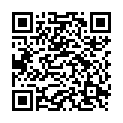|
|
|
| Module code: E911 |
|
|
2V (2 hours per week) |
|
2 |
| Semester: 9 |
| Mandatory course: yes |
Language of instruction:
German |
Assessment:
Written examination
[updated 12.03.2010]
|
E911 (P213-0179) Electrical Engineering, Master, ASPO 01.10.2005
, semester 9, mandatory course
|
30 class hours (= 22.5 clock hours) over a 15-week period.
The total student study time is 60 hours (equivalent to 2 ECTS credits).
There are therefore 37.5 hours available for class preparation and follow-up work and exam preparation.
|
Recommended prerequisites (modules):
None.
|
Recommended as prerequisite for:
|
Module coordinator:
Prof. Dr. Albrecht Kunz |
Lecturer:
Prof. Dr. Albrecht Kunz
[updated 12.03.2010]
|
Learning outcomes:
Students who successfully complete this course will be acquainted with the main components of optical communications engineering and how they interact in an optical DWDM system.
Students will also be able to understand and characterize the latest developments in optical communications engineering.
Successfully completing this module will allow students to contribute meaningfully to current research and development projects in optical communications.
[updated 12.03.2010]
|
Module content:
1.Introduction
2.Optical fibres
3.Optical transmitters and receivers
4.Couplers and switches
5.Coupled mode theory
6.Integrated optics
7.DWDM systems
[updated 12.03.2010]
|
Teaching methods/Media:
Overhead transparencies, PC, video projector
[updated 12.03.2010]
|
Recommended or required reading:
Brückner, V.: Optische Nachrichtentechnik, Grundlagen und Anwendungen, Vieweg Verlag,
Schiffner, G.: Optische Nachrichtentechnik, Einführung in die hochbitratige optische Informationsübertragung, Vieweg Verlag,
Unger, H.-G.: Optische Nachrichtentechnik, Teil 1: optische Wellenleiter, Hüthig Verlag,
Unger, H.-G.: Optische Nachrichtentechnik, Teil 2: Komponenten, Systeme, Messtechnik, Hüthig-Verlag,
Hunsperger, R. G.: Integrated Optics: Theory and Technology, Springer Verlag,
Ebeling, K. J.: Integrierte Optoelektronik, Springer Verlag,
Wrobel, C.: Optische Übertragungstechnik in der Praxis, Hüthig Verlag,
Mahlke, G., Gössing, P.: Lichtwellenleiterkabel, Publicis MCD Verlag,
Strobel, O.: Lichtwellenleiter-Übertragungs- und Sensortechnik, VDE Verlag,
Heinlein, W.: Grundlagen der faseroptischen Übertragungstechnik, Teubner Verlag.
[updated 12.03.2010]
|


